I have already said, or rather written, a lot about how wonderful the course was and what it involved. I raved about the culture of studying at UNIS, about the respect, kindness, and openness. But Zośka does not live by learning alone, and certainly not in a place like Svalbard! It’s time for a collection of various interesting activities and experiences “after hours” ;)) There will be mountains, courses, exhibitions, films, and much, much more!

Svalbard was a new and unknown place for me. I knew that mountains, snow, cold weather, and the scientific course I wrote about extensively in my previous post awaited me. If you haven’t read it yet, here’s a link, because it’s worth starting with!
Now that you know that I spent six weeks in Svalbard and was mostly busy studying and working on a group project, I will move on to my free time – which is what will interest a much larger number of people (at least I think so, as the term “molecular ecology” sends shivers down the spine, but not necessarily ones associated excitement).
1. Hiking, climbing, and walking in Svalbard
First moments
After arriving, we boarded an airport bus, whose driver not only sold us tourist attractions during the ride, but also, seeing how many students he had on board, dropped us off right at the student housing. Interestingly, he was on the same flight back to Oslo with us – I’m keeping my fingers crossed that he was going on a well-deserved vacation somewhere warm.
We barely had time to drop our luggage in our room before we were swept away on our first mini walk around the area – it wasn’t long, because we didn’t know where to go and our excitement threw us from one corner to another. But the next day, on Sunday, we grabbed our cameras and set off.
It is worth noting that polar bears live in Svalbard. For this reason, you are not allowed to leave the city (Longyearbyen) without “appropriate polar bear protection,” which usually means a flare gun and/or a rifle. Therefore, our first walks took place only within the city limits – either to the beach or along the river. This is what the fjord coast looks like: rocks.
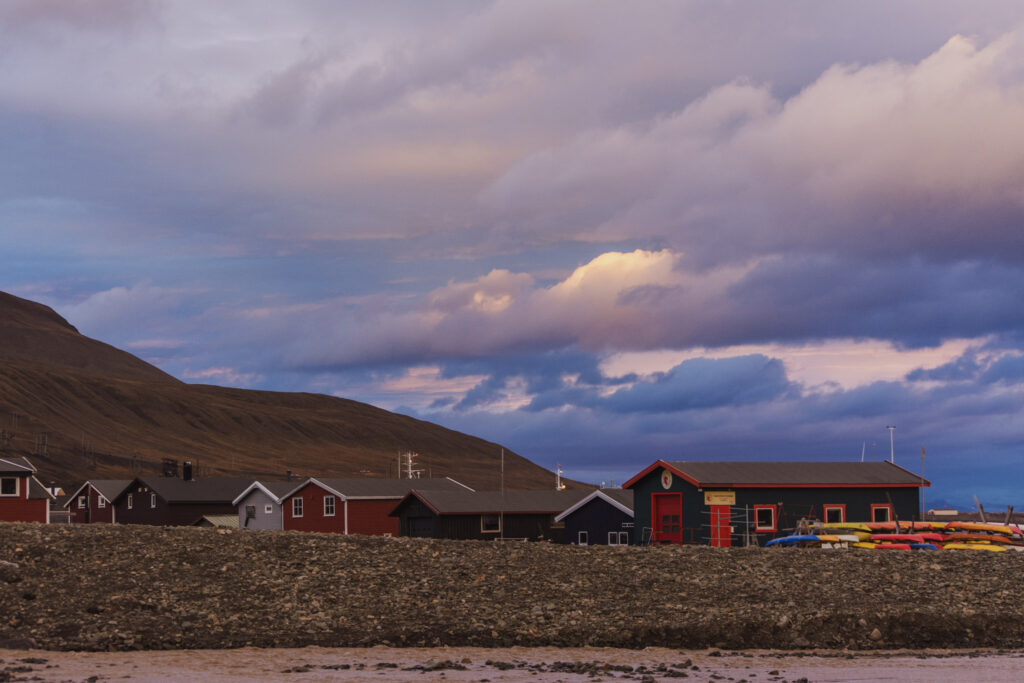
Hiking routes on Svalbard
Once we got to know more people, courses began and we completed safety training, the trips became longer. Every day when there were no classes, we could postpone them or finish a little earlier, we used it as an opportunity to go out somewhere. There were weeks when our legs carried us uphill day after day.
I tried to mark all the major trips I took on a topographic map of Svalbard – I did some routes multiple times (I think I went to Varden three times), but to show the overall scale, all the routes are simply thick red lines.

Some trips lasted an hour and a half or two (the route to Varden, Sukkertoppen, Blomsterdalshogda, to the Longyearbreen glacier moraine), others took 4-5 hours (Sarkofagen, around the Longyearbreen glacier, trip to Endalen), climbing Trollsteinen took most of the day, as did the longer trip to Bjorndalen (upper left part of the map), which I will talk about later.
There are still many places I didn’t manage to visit, but would very much like to see – for example, Nordenskioldfjellet, the highest peak in the area, and the second part of the Adventdalen valley. This tells me that I should return to Svalbard.
All trips were for a minimum of two people and a maximum of 14 – walking in larger groups is normal and quite advisable here. It’s more fun! And safer!
If anyone is wondering why you would want to trudge for two hours uphill in knee-deep snow or on slippery, loose rocks, I don’t have a clever answer. Some people like it, and I am one of them – unless you ask me on the way up, then I will complain and say that I could have stayed at home and played The Sims. But I get over it somewhere around the flat part or the summit. Every time.
It’s easy to get tired in this area because it’s difficult to go anywhere without encountering a steep climb. Gentle slopes are overrated. All you can do is pant your way up and pray for a safe descent – or possibly run down and ignore the rules. Svalbard taught me that when conditions are risky for descending, running downhill is often a better option. Don’t quote me, don’t follow my advice – it’s not always sensible.
And the views? Let them speak for themselves.
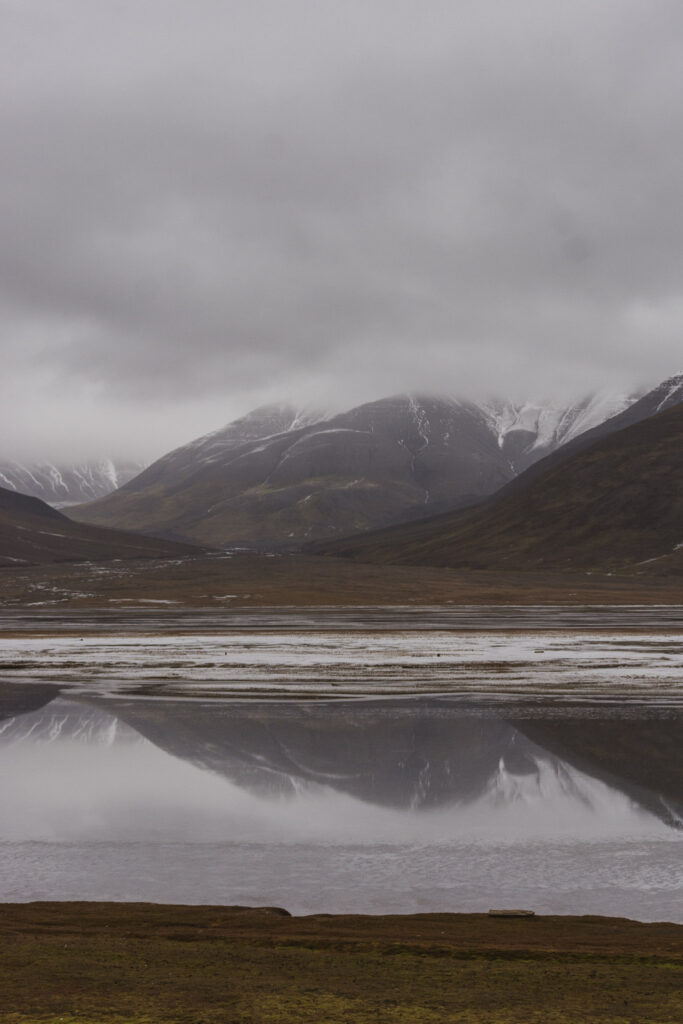
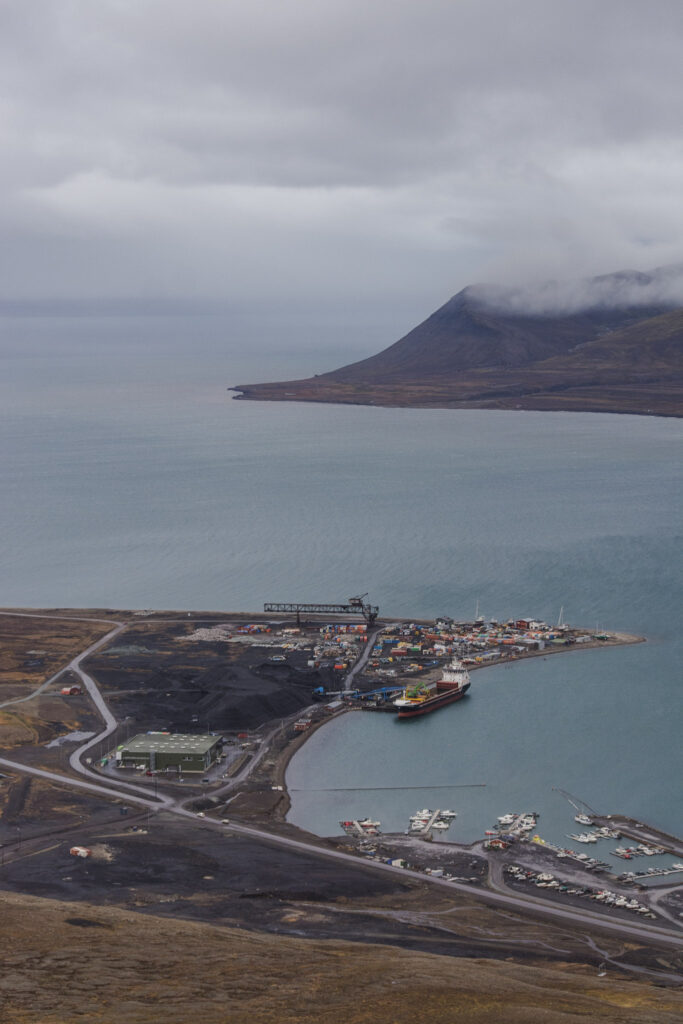

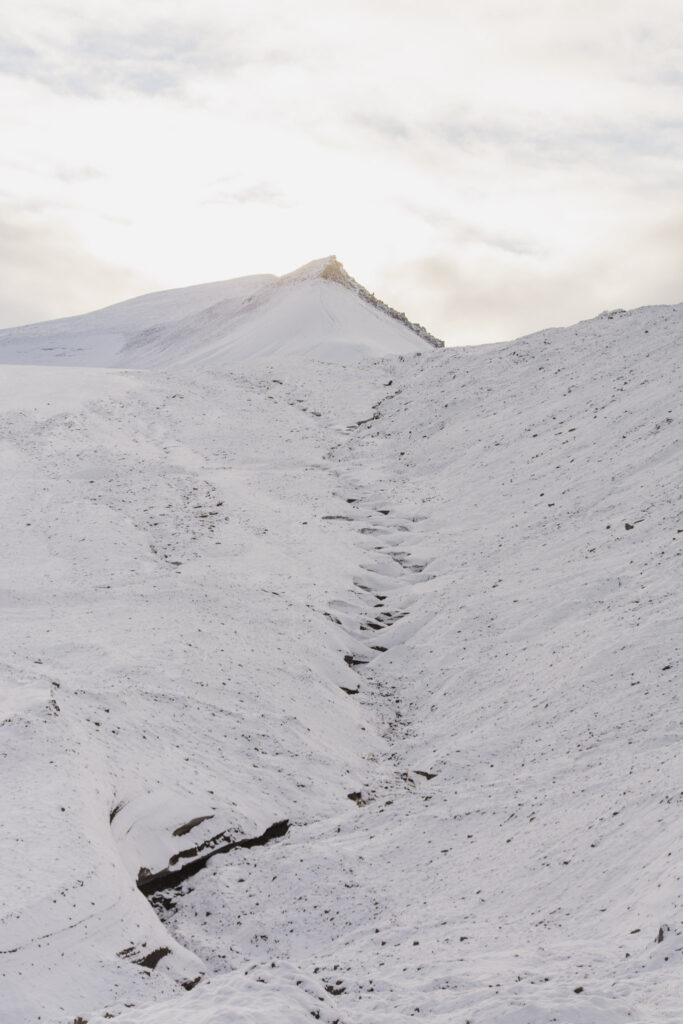

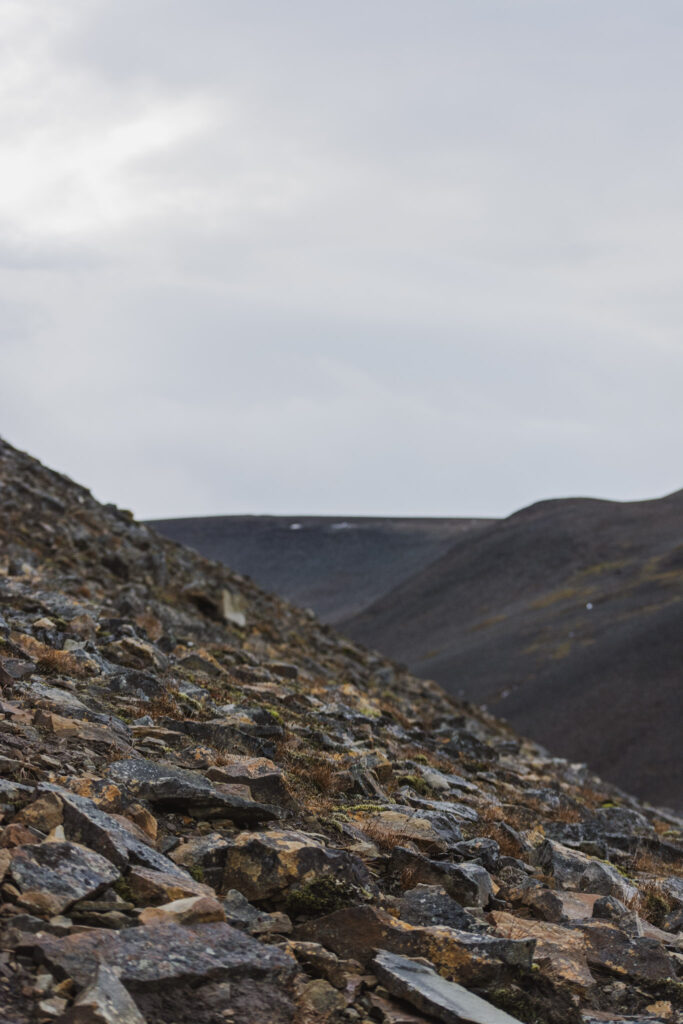

2. People in Svalbard
The whole trip to Svalbard still feels somewhat unreal to me. That it all worked out, that I went, I was there, I completed the course, and I came back. But what is definitely magical is that I was able to spend some time with Zuza while I was there. And who is Zuza?
My close one came up with the description “arctic sister,” and after these six weeks spent in the Arctic, I think it’s spot on. Zuza and I managed to see each other several times, whether climbing mountains, walking dogs, or just eating something good.
If any of you remember the distant days of 2018, my blog already existed then, and was even a year old. I don’t suppose you do, beacuse the English veriosn didn’t exist back then and I wasn’t planning to create one, to be honest. I don’t have the courage to look through all my old posts, because many of them were written by a fifteen- or sixteen-year-old with her opinions about the world, but I do look at some of them from time to time. And in 2018, I came up with the idea for a series of Positive Stories (pl. Pozytywne Historie), which are posts on various topics, but always with the aim of leaving a warm feeling inside you. Some of them were interviews with people I found somewhere and couldn’t forget about.
One of those people was Zuza.
You see? Seven years ago, I conducted a remote interview with her and published a post about it. Just like that. And this year, I went to the pole, to the literal end of the world, and finally met her. To let that sink in, I’ll pause my monologue with a link to that memorable post – it is in Polish, so if you wan’t to check out Zuza while not struggling with my crazy home langueage, I’ll leave a link to her Instagram as well.
I didn’t plan to go to Svalbard two years ago because I knew Zuza lived there. I followed her online quite regularly until around 2020/2022, and then, as it happens, less so. It was only this year, after getting into the course, that I admitted to myself that I knew someone from that particular end of the world. At the urging of my close one, I finally got in touch, but I waited until… June?
I am grateful to Zuza for responding so enthusiastically to my random message, “Actually, I’m going to the North Pole, do you want to meet up?” From the beginning, I had the comfort of knowing that someone at the end of the world at least knew my name, how to pronounce it, and that I was coming.
That’s why I’m biased, but it’s thanks to people that I have the most beautiful memories and experiences in Svalbard. Of course, this is largely thanks to my close one and Zuza, but not only. In order for trips to the mountains to be possible before I got my gun license and a physical weapon in my hands, other people were always needed. This safety issue is a good excuse for integration, and thanks to that, I not only got to know the people from my course really well, but also other students at UNIS.
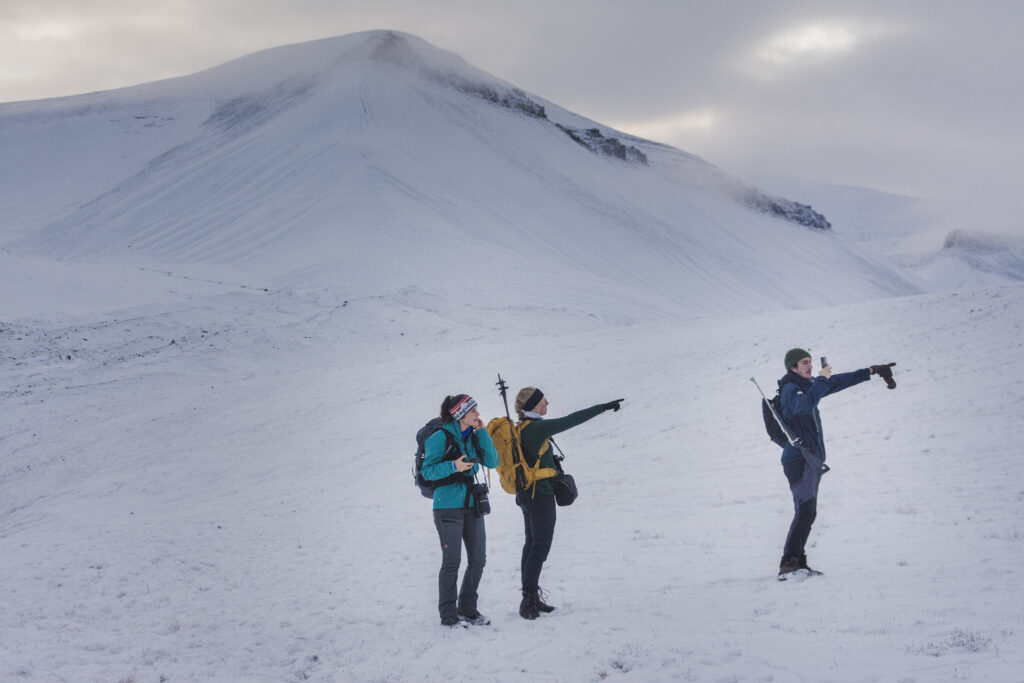
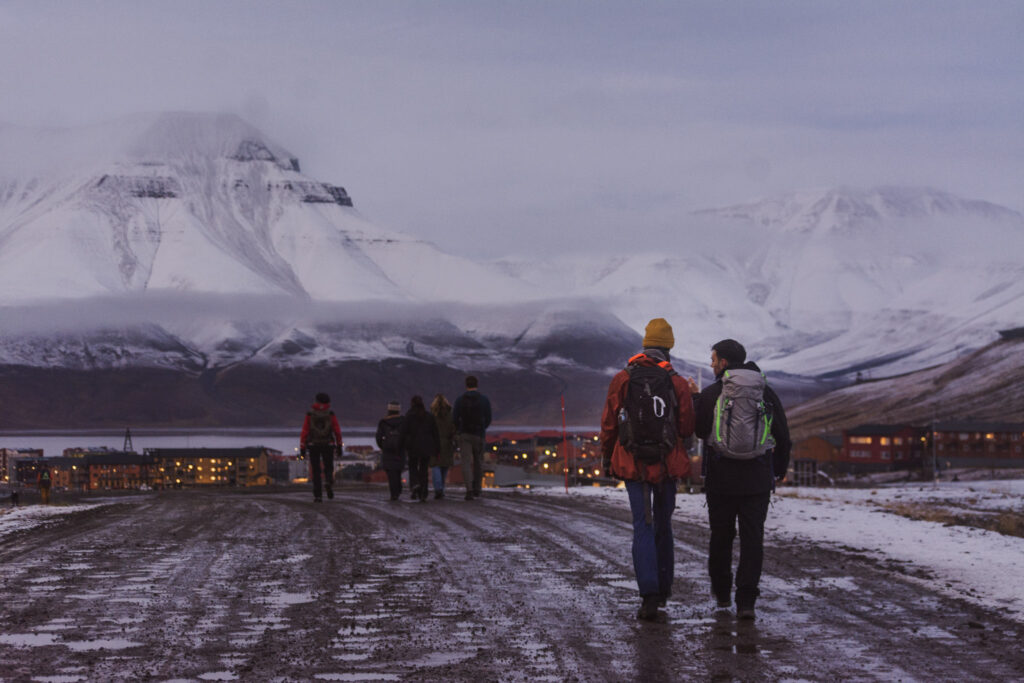
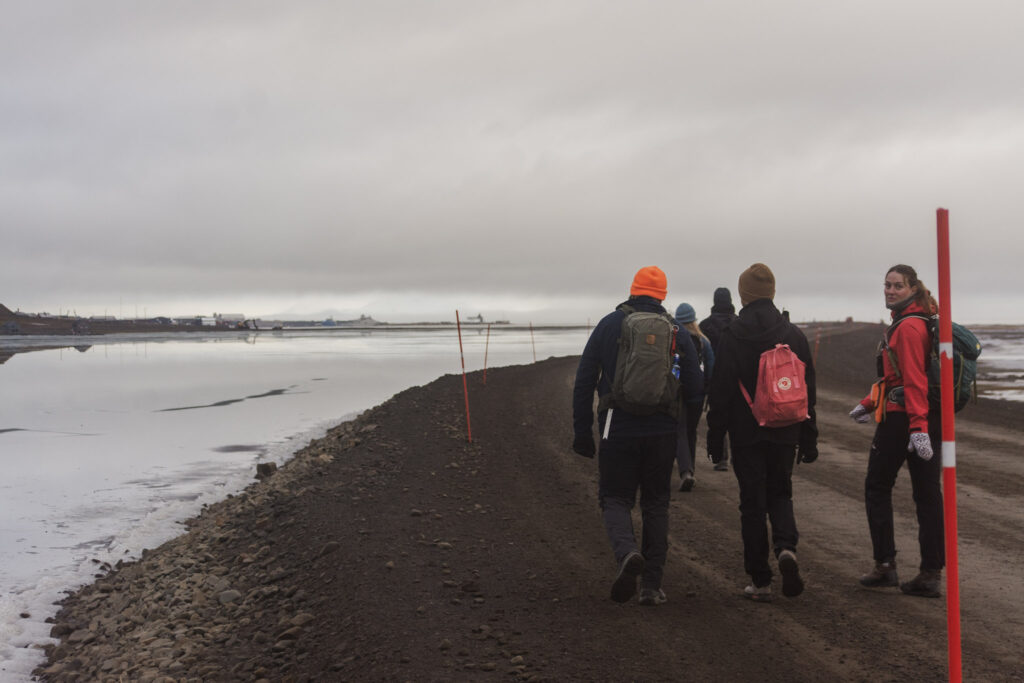

Thanks to this, I came back from the course with many more or less strong relationships, at least some of which will stay with me for longer. And I will see Zuzia again – whether in Poland or at the North Pole.

3. Cultural life on Svalbard
In terms of social life, Longyearbyen has everything a small town could need. A museum, art galleries, a cinema, cafes, restaurants, a church – all the basic meeting places.
Places I have visited and encourage you to visit too:
Nordover
An art gallery, cinema, café, and small shop with works by local artists all in one – Nordover (link) is a must-see for everyone.
The cinema hall can seat about 20-30 people, so if you really want to see a specific movie or go on a given day, buy tickets in advance. We saw “The Life of Chuck” (a wonderful film, which I highly recommend) and bought tickets the day before (costing about 60 NOK), and there was no problem with seats. There were no more than a dozen people in the theater. The screening had Norwegian subtitles but the original (English) audio, so we had no problem understanding the film. Maybe there are also screenings with English subtitles, I wasn’t sure about that. However, the Norwegian commercials were entertaining – I didn’t understand a single word ;))

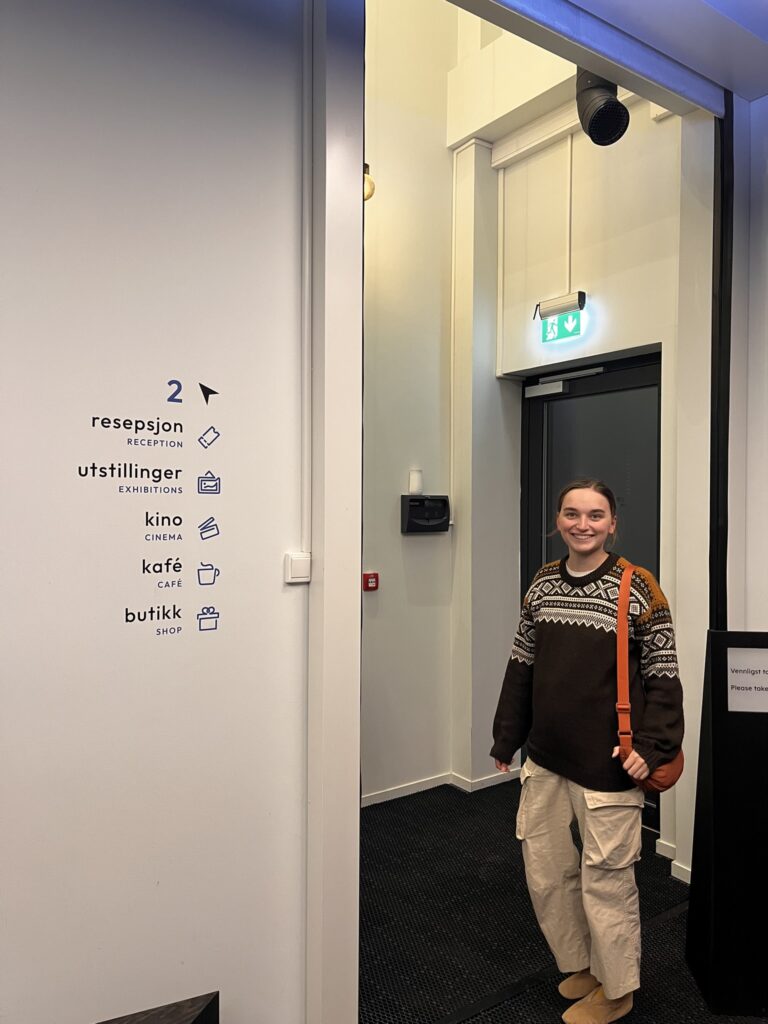
Svalbard Museum
It is located in the same building as UNIS, but the entrance is on the right, not on the left – tourists regularly had problems with this, which resulted in a sign saying “for employees and students only” on the door leading to UNIS ;)) And, of course, since it was always close at hand, I only went there for a longer visit in the last days of my stay – and it’s really worth it. It is a well-designed educational museum from which you can learn a lot. Group tours or independent visits are possible – entry is free for UNIS students!
You can read more on the museum’s website (link), but it is open every day and is a must-see. The history of the first communities in Svalbard, a list of what a whaler needs to survive the winter, the role of women, the mass extermination of species, and much more. Many of these stories will stay with me for a long time.
North Pole Expedition Museum
A little more hidden, though visible from the UNIS halls. It is located closer to the beach and is only open seasonally, so it’s worth checking if you’re coming at a time when you can visit it. It closed quite quickly after our arrival, and I am glad that a friend let us know about it – thanks to that, I had time to read about other explorers and travelers who took on the challenge of “conquering” the North Pole. You can find the exact opening dates on their website (link).
In terms of content, it definitely tells you more about expeditions than the Svalbard Museum (as the name might suggest), so I recommend seeing both if possible. As far as I remember, the ticket is NOK 150.
Cafe Huskies
An iconic cafe with a husky theme. Opened in 2022, it quickly won the hearts of both locals and tourists. There is always at least one husky working on site, which you can pet or interact with under certain rules. As this blog is mainly a dog blog (there’s no denying it), I don’t really need to explain the basic rules of respecting a dog’s boundaries – if this is new to anyone, there is a quick summary on the tables in the cafe. In three words: respect the animal.
It’s also a good place to buy souvenirs, where you’ll find gems from local artists (or less local ones, but those who have fallen in love with this place – I’m thinking, among others, of a Polish artist who drew postcards and stickers for Cafe Huskies).
Here is a link to their website, but you have to go there and drink their outstanding cocoa to fully appreciate it – they have lots of different flavors!

Fruene
A café for all lovers of handicrafts. Walls covered with yarn, knitting needles, and crochet hooks, not to mention patterns. This is where the knitting club meets (a sweet student initiative, isn’t it?), and where you can catch the bug for this arctic hobby. Plus, they have good coffee and sweet and savory pastries. Oh, and they also sell local cosmetics – as a huge fan of various soaps, I bought two there and brought them back as souvenirs/gifts. Here is a link to their website.
Music
I told you, this northern end of the world really has everything! A cult event is definitely Dark Season Blues, a music festival that begins during the last days of the year – not calendar days, but when the sun slowly stops rising and setting. When we welcome the dark season. When we welcome the polar night.
I didn’t get to enjoy the festival too much, but I did see the band SUNNAN, which I didn’t know existed before, and I consider their concert to be one of the best in my not-so-long life. It’s worth mentioning that I haven’t been to many concerts, but anyway – it was an interesting experience and I encourage you to check out their work. You can listen to it here.
The moral of the story is that the music scene in Longyearbyen is lively and vibrant, and even students get together to rent space and play!
Don’t be fooled – that’s not all. There are restaurants, pubs, a brewery at the end of the world (no joke), and a gallery deep in the valley, which I haven’t visited. I am only presenting my subjective selection of places I have been to and consider a must-see!

4. Slightly extreme trips and excursions
Student cabin
In the culture of Norway, Sweden, and perhaps other Scandinavian countries that I am not familiar with, so-called “cabins” are popular – in Polish culture that would be allotments, huts, and summer houses. They are places of rest, usually hidden somewhere in nature, with older versions lacking running water or electricity, while newer ones vary. But you know, I’m not an expert, so please don’t quote me on that.
Anyway, there are also quite a few cabins in Svalbard – some are a few or several kilometers from the “center” of town, others are built in the middle of nowhere and the only way to get to them is by snowmobile in the winter season. Or by dog sled.
UNIS is a wonderful place and has one student cabin. Any student can apply for it, including short-term students (like me!). Access is granted on a lottery basis – at the beginning of the month, forms are collected from those who are interested (how many people, what dates, have you used it before), and after a week, the results are published – which groups got access to the student cabin on which days. Our group, which ultimately consisted of 12 people, managed to get the whole weekend to ourselves. The only thing is, the cabin is in Bjorndalen (translated as “bear valley”), 15 kilometers from the city, and to get there, you have to cross a river. Oh, and there’s no cell phone reception, water, electricity, or toilet. Nice, right?

We spent a beautiful, magical weekend there. Sometimes all you need is no cell service and, instead of using your phones, long conversations by candlelight and the warmth of the fireplace. Carrying 6 liters of water for 15 kilometers on our backs, plus sleeping bags, food, and clothes – that was the less fun part, but some people like to get tired (ekhem, me) and that had its charm too. A few of us were smarter and ordered a taxi for the first 10 or more kilometers – as far as the road went.
To get to the cabin, you had to cross the river, which is easiest in winter – you can put on crampons and walk across the ice without much trouble. In October, it wasn’t so easy, because only a few places were frozen, and it was quite tricky – if ypu would trust it to stand on it, then you’ll sink into the water up to your calf. That’s why we had to jump on the stones (remember the big backpack?) and accept that our shoes would get wet. Great fun! But then you really appreciate the warmth of the fireplace and changing into dry socks ;))
The hut is a base for peaks and valleys that are inaccessible within a few hours’ walk from Longyearbyen. We finally climbed Pilarberget and wandered around that plateau, but many people plan longer trips from there (for example, towards Colesbukta).
Again, I will leave some photos to speak for themselves.

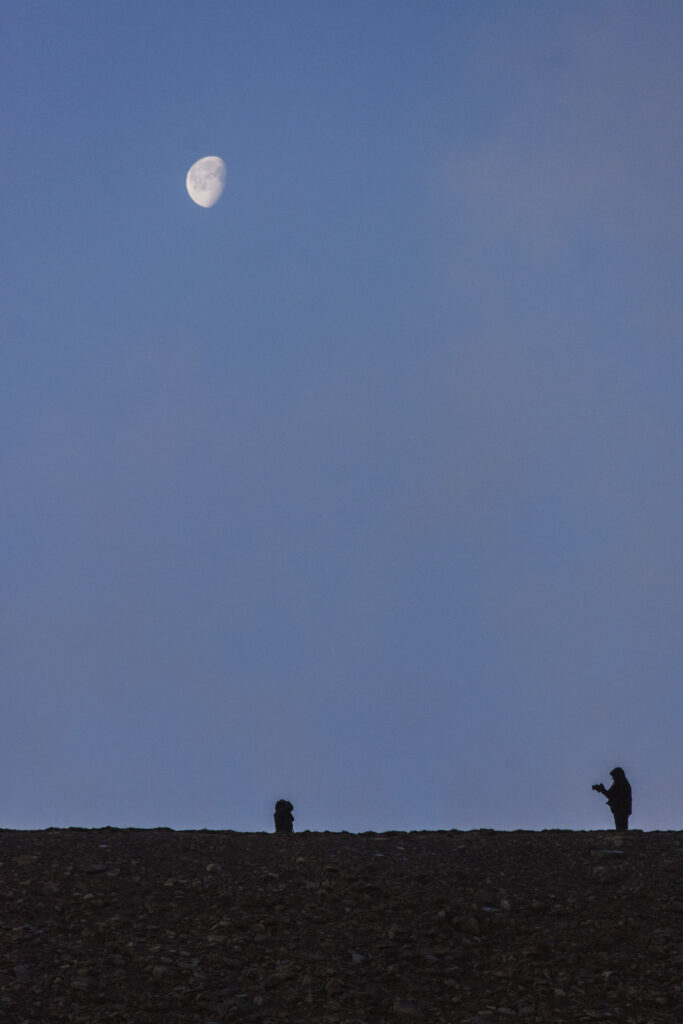

Glacier
There is no denying that glaciers are one of Svalbard’s unique natural assets. Over 60% of the archipelago’s surface area is covered by glaciers – in the face of climate change, they are shrinking at a rapid pace, but you can still admire their majesty. At the Svalbard Museum, I saw beautiful photos from several decades ago showing how enormous they used to be.
Glacier tourism is a risky activity, let’s be honest. A glacier itself is a mass of ice that moves at a pace that is difficult to observe. The greatest danger is crevasses – places in the ice that are thinner or hide ice caves underneath. One wrong step and you fall – sometimes several dozen meters or more. Other crevasses are clearly visible, stretching for many meters. Therefore, I will not encourage anything here, I appeal for common sense and not to undertake something whose dangers we cannot comprehend.
Having said that about the dangers, glaciers are beautiful. I had never had the pleasure of seeing them before, and it was something new for me. At first, just walking around them on one side or the other, they were fascinating – huge white-gray-blue patches among the rocks. It was only when the temperature dropped for a longer period of time that I began to explore them more closely.
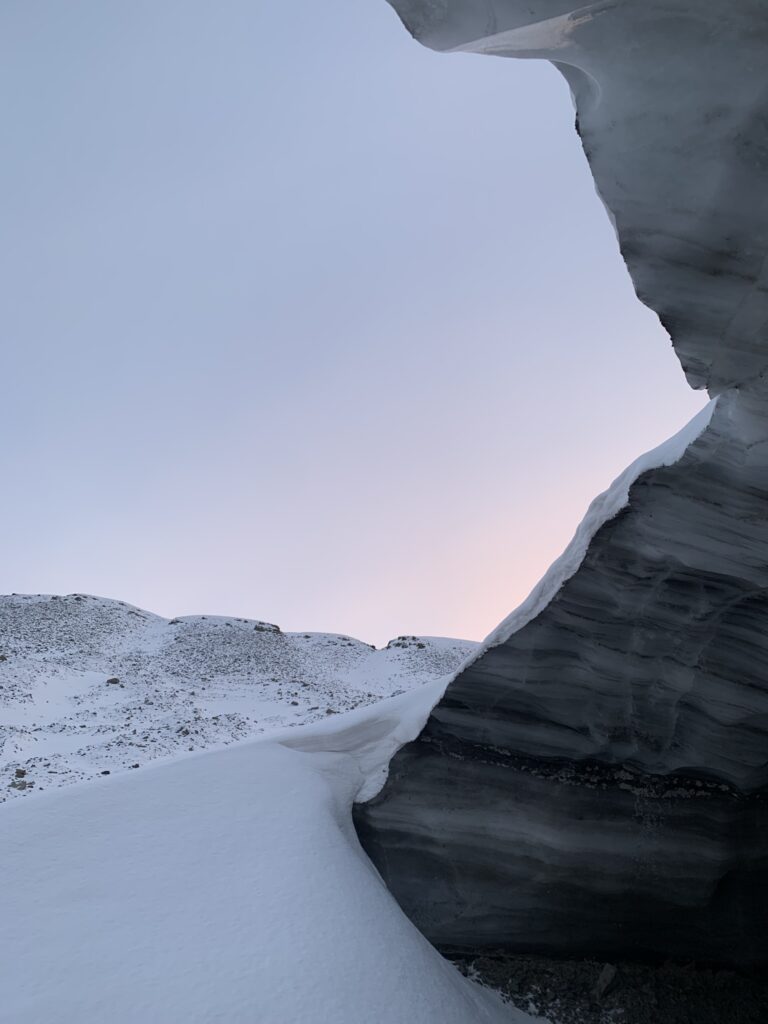
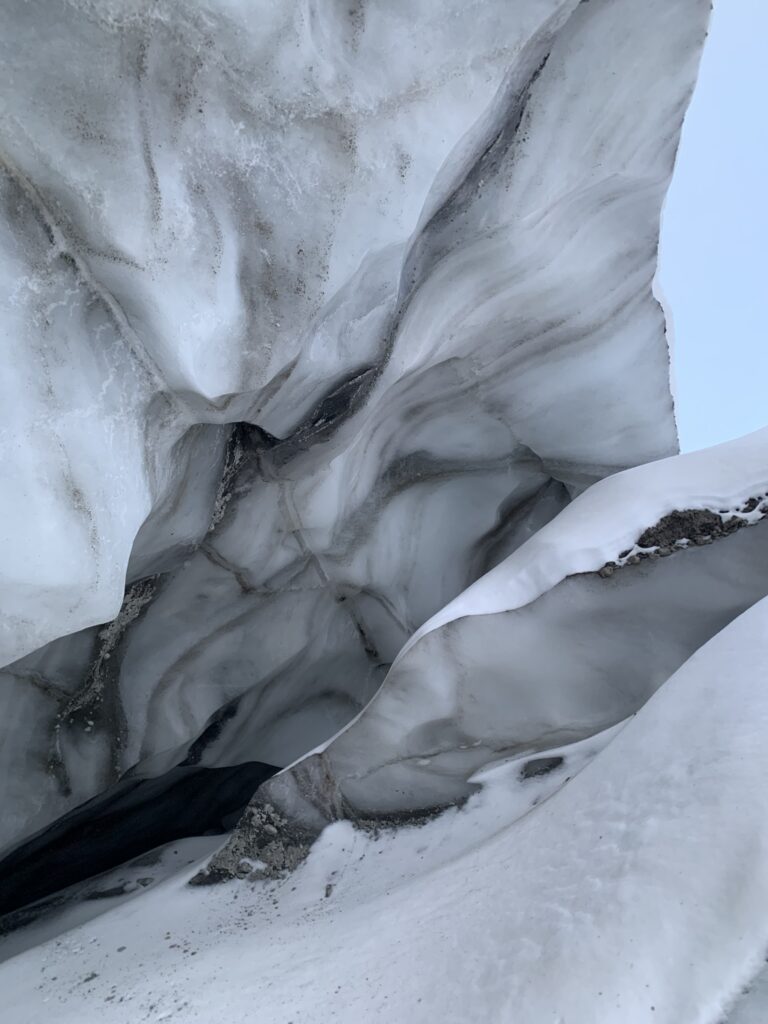
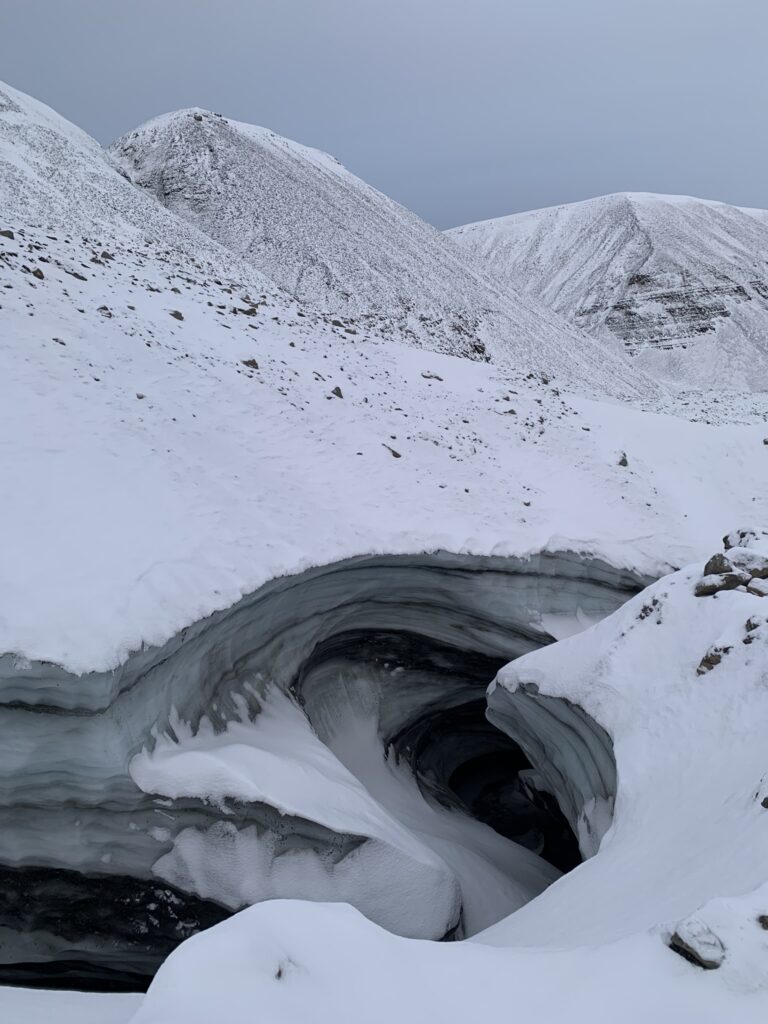
We were on Svalbard before the ice cave season – when sub-zero temperatures persist for a long time, travel agencies usually choose one or two caves and prepare them for tourists. We saw one such cave – already equipped with ropes and ladders. But as they say, students are actrually the ones open the season ;))
For this reason, I was able to see many beautiful things – I didn’t enter the cave itself, but I walked through more than one meltwater channel. Glaciers are crossed by channels through which water flows during the thaw, and these are usually the most easily accessible. The photos above also show several entrances to various caves, which I did not go inside.
On a glacier, we move with reason and caution. If you don’t have any experience or are not accompanied by knowledgeable people, please go with a guide. Ice axes or crampons are mandatory. For ice caves, ropes, ice hooks, and helmets are required. Always wear headlamps. And use common sense. And never go alone!

5. Local and student initiatives
Student ideas and organisations
I know I’m repeating myself when I say that Longyearbyen is a city with soul and lots of initiatives, but it’s true. There’s always something going on, but not on an overwhelming scale (I’m smiling at you, dear Warsaw), just enough that you have a chance to take advantage of most of them.
Student activities include a knitting club, a climbing club, a running club, a sauna club, a kayak polo club, and probably many more that I can’t remember. Among those that were available, I eagerly participated in Friday gatherings, ballroom dancing classes, and student equipment.
Friday gatherings are a student initiative that transforms the UNIS cafeteria after 5 p.m. on Fridays into a place full of students and staff who want to have a good time together. There is plenty of space (as I described in my previous post), music is played, and a student-run snack and drink shop is open. On many Fridays, a theme is imposed – e.g., Oktoberfest or Halloween, and the Halloween party will stay with me for a long time. Add to that conversations, beer pong, card games, and whatever else anyone wants. Cool, right?
The ballroom dancing course is a spontaneous initiative of several students who are spending a semester or longer at UNIS and who were or are involved in dancing. They decided that since it may be the northernmost university, with cafes and restaurants, there could also be a ball. This week (November 21), they are organizing a ball, and as part of the preparations, they offered a free ballroom dancing course to anyone interested. When I saw this information, I said firmly that I might skip the ball, but I would not skip the course!
I had never had anything to do with ballroom dancing before, but I had a great time – I learned a lot, and the organizers made sure that all participants were comfortable and that the atmosphere was relaxed. Tom, Olga, Lina, and others – thank you <3 And! Tom has his won blog, so if you’d like to check it out, here it is: LINK. Since it’s mostly in German, I encourage you to look at his Instagram account as well!
Student’s equipment is a powerful resource of really high-quality equipment that any student can rent. Every two weeks, applications are collected and the winners are selected by lottery. The trip to the student cabin would not have been possible without the larger backpacks, sleeping bags, and sleeping mats from Student’s equipment. Everything is managed, again, by students. Volunteers. There are no deposits, no contracts, everything works on the basis of mutual trust. And so, on Thursday afternoons in the city, you can observe group migrations of students who first return and then collect the items they have drawn. And so it goes, every two weeks!
Local initiatives


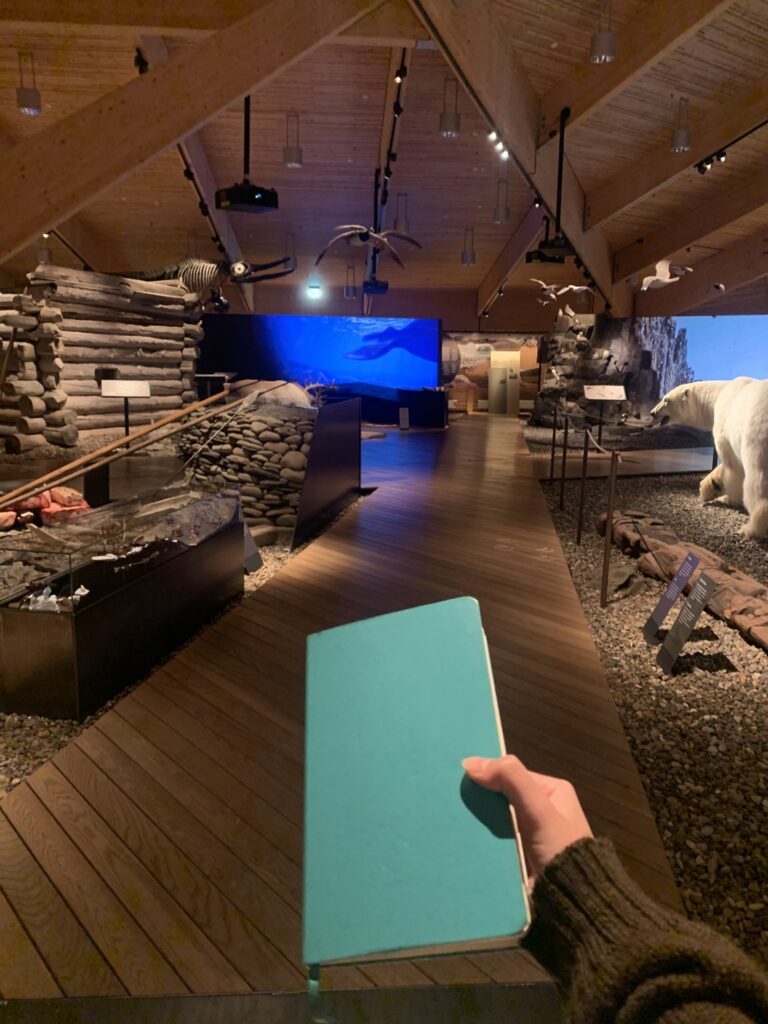
The photos above are from writing workshops, which brings me to local initiatives. There is an institution called Artica Svalbard (not to be confused with the eyewear manufacturer, whose website I almost posted here by mistake), which connects artists from around the world with the local community of Svalbard.
Art is present wherever important questions are being asked. Svalbard is such a place in our time.
From Artica Svalbard page
For me, this is a completely new type of institution, offering artist residencies as well as workshops for residents – I could probably write about it for hours, but for now I will limit myself to these few sentences. Take a look at their website!
In October, Artica offered free writing workshops, and as soon as I found out about it, I sent emails with questions and requests to participate. I got into a workshop held at the Svalbard Museum with Clara Arnaud, a French writer whose fiction and non-fiction novels address political and climate issues. You can read more about her here, and I am waiting for one of her books to be published in a language I understand (French is not one of them).
The workshops were based on creating stories based on or related to objects in the museum (a tour by an archaeologist gave us a lot of useful information). Mine has been written and ready for a long time, and the feedback I received from Clara encourages me to show it somewhere, sometime. Maybe here? We’ll see.
Apart from Artic Svalbard, there are many interesting events happening in the city, and you can follow them all on this website: https://kalender.lokalstyre.no/events

6. Other and miscellaneous
There are quite a few activities that I couldn’t assign to any of the previous categories. During the first weekend of my stay, I did some crazy things, like spending almost two hours in a sauna and then jumping from it into the sea. I know, I wouldn’t believe it either, so here’s a video as proof:
Apart from visiting the sauna, I baked like crazy, because when you don’t have a dog, and at university they give you free time and don’t overload you (which is still something new), it turns out that you have quite a lot of time. And you don’t always go to the mountains – and even if you do, you come back from them eventually, so there’s time for baking. So I made sourdough from scratch (everyone asked if I had brought a “starter” with me, but no, I bravely made it from what was available locally!) and baked three or four beautiful loaves of bread with it. And since I love cookies and cakes, and they cost a bit in the store, I baked like crazy. Mainly banana bread made from bananas that were on sale, plus yogurt cakes and lots of different muffins and cupcakes.
In the city, I also regularly visited Bruktikken, which I wrote about on Instagram – it’s like a second-hand store, but free. It’s important to note that this space is intended for Svalbard residents (including students), not tourists. Thanks to this, I had an extra beautiful blanket, which I washed before leaving and gave back – someone else will be happy to have it. I also grabbed two sweaters and a few blouses – these came home with me. Since Bruktikken was only open three times a week for short periods of time, visits there were a real attraction – we never knew what we would find inside this time :))
And sports shops! I miss and will continue to miss the fact that most shops in Longyearbyen were travel, sports, and outdoor shops, so you could spend hours browsing beautiful and practical outdoor clothing. Of course, I brought back a warm hat and fleece as souvenirs, which I am wearing as I write this post.
I spent many an afternoon browsing the sale sections of these stores, and I don’t consider it time wasted!

Phew, I think that’s it. I realize this is a long post. I still have to write about the budget/cost estimate for this whole adventure and the list of things to take with me. I will gradually add these posts, but as you can see, it’s quite a bit of work. Since you’ve been reading this for over fifteen minutes, you can only imagine how many hours it takes me to write it ;))
If you have any questions about Svalbard or other things, feel free to contact me, as always – by email or social media. Messages such as “I read it, cool/helpful!” are also very welcome, because if I were writing this for myself, it wouldn’t look so nice!
That’s all from me for today, take care!
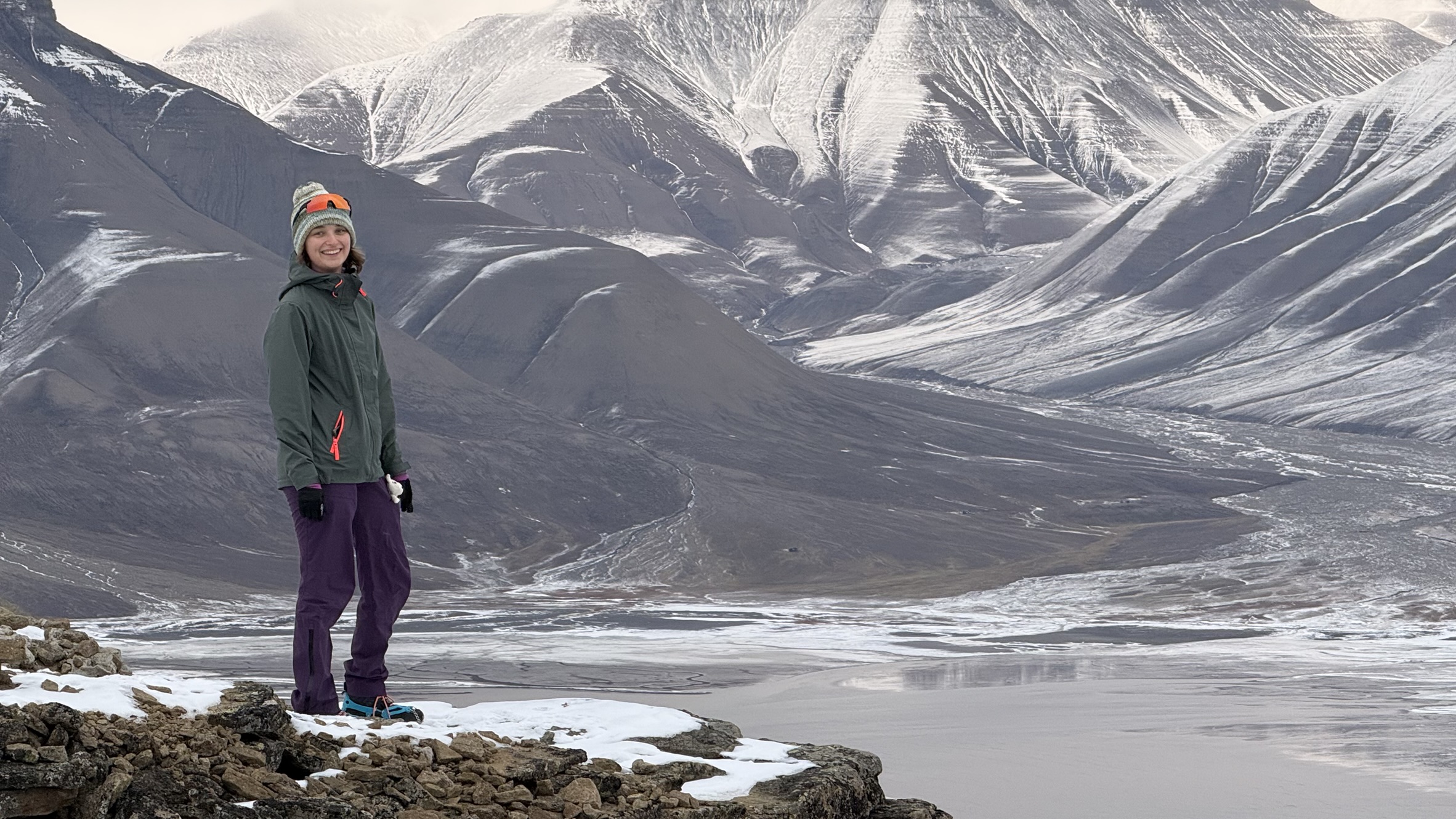
Musisz być zalogowany, aby dodać komentarz.